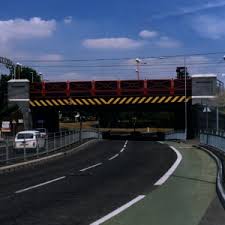 Source : :Reuters May 15 2010 , New Delhi
Gold imports by India, the world's biggest market for the precious metal, could drop
Source : :Reuters May 15 2010 , New Delhi
Gold imports by India, the world's biggest market for the precious metal, could drop
for a third straight year in 2010 as record high prices scare off traditional buyers.
Traders expect to spot the first sign of this trend at next week's Hindu festival of Askhay Tritiya, when demand usually jumps because it is considered an auspicious time to buy jewellery and coins.
"Forget buying for the festival, on the contrary people are selling," said Suresh Hundia, president of the Bombay Bullion Association in Mumbai.
"There is a queue of sellers."
Gold is up 12.6 percent so far this year to record levels on investors' fears that a $1-trillion rescue package to prevent a Greek debt crisis from spreading to other euro zone states would eventually fail, or stoke inflation.
On Friday the metal was heading for its fourth consecutive weekly rise, matching a run that ended in late November. Gold stood at $1,234.40 an ounce by 0636 GMT, up $2.57 from New York's Thursday notional close, but off Wednesday's record of $1,248.15.
Traders say many Indians are responding by buying smaller quantities to maintain the same expenditure, or recycling old jewellery. Those who can afford to spend more may wait for prices to stabilise before they buy.
"Demand has turned to zero in the last four days," Hundia added. "Last year for the festival about 12 tonnes was sold. If prices stay like this, there will be very little sold."
After Akshay Tritiya, demand may spurt only for the festivals of Ganesh Chaturthi in September and Dhanteras in November.
"If prices stay like this, near all-time highs, physical demand could take a hit and a lot of scrap could start coming in. Imports for the full year could fall by 25-30 percent," said Abhishek Raval, a precious metals manager at IndusInd Bank.
For a graphic on India's gold purchases since 1997, click here
For a graphic timeline of gold's rise to record highs, click here
GOLD BECOMING INVESTMENT, NOT JUST JEWELLERY
In India, where gold has long been considered auspicious, the bulk of demand is for jewellery.
But a small and growing number of investors is turning to gold to diversify portfolios and protect themselves against inflation, which has driven prices higher and crowded out jewellery buyers.
"People are allocating 20 to 30 percent to gold in their portfolios," said Haresh Acharya, director of Parker Bullion Pvt Ltd, a large wholesaler in Ahmedabad, noting that wealthy investors were buying the metal.
"The risks involved in the stock market and high inflation are making them allocate more to gold."
Gold as an investment is a relatively new asset class in India, where headline inflation soared to a 17-month high of 9.9 percent in March.
Last year India's demand for gold jewellery was 405.8 tonnes, while that for investment was at 74.2 tonnes, data from the World Gold Council shows.
Rajan Mehta, director of Benchmark Asset Management Co Pvt Ltd in Mumbai, which started India's first gold exchange-traded fund in 2007, said total gold under exchange traded funds could rise as much as 50 percent within a year from 10.063 tonnes now.
"If you look at gold, the returns in the last few years have been very high," he said. "There is more and more realisation that this is an asset class that will give good returns."
On the other hand, a Mumbai-based fund manager said gold was not a compelling buy, because apart from price fluctuations, it was subject to currency risk, as India is a big importer.
Investment in gold still pales in comparison to household demand, which accounts for nearly three quarters of sales in India, and most Indians do not consider it an asset class in its own right, but as a store of wealth.
"The majority of households that buy gold in India don't do that to sell at a higher value necessarily. It becomes a form of savings," said Rajeev Malik, economist at Macquarie Capital, Singapore. "The two are not as substitutable as elsewhere."
Indian jewelers saw brisk sales from January to April, when imports rose 74 percent to 126 tonnes from the same period a year ago as demand bounced back, after a dip last year when prices were high and the monsoon failed, hurting rural incomes.
Food shortages following last year's poor harvest touched off inflation, drawing investors to gold, even though it pays no dividends and can incur storage costs.
"Prices are at unbelievable levels," said Rajesh Mehta, chairman of Rajesh Exports Ltd, one of India's top jewellery makers and exporters.
Trade officials have their fingers crossed for good rains in the monsoon period from June to September, vital to boost incomes in the rural areas home to two-thirds of Indians.
Normal rains are forecast but predictions can often go awry.
"If the monsoon is bad, it will be a crisis. Sales will fall more than they did last year," said Haresh Kewalramani, director of the Bombay Bullion Association.






















